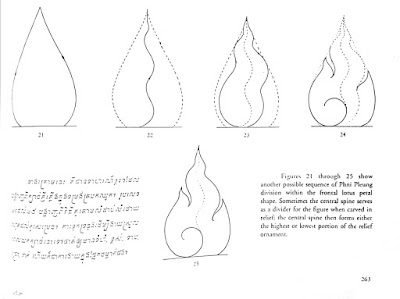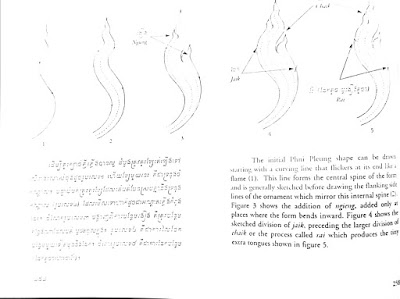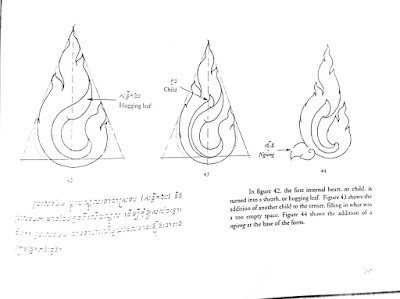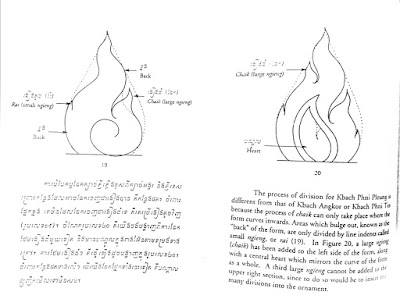the Great Lake which was for a short time a royal residence Uncertainty surrounds these three sta-
iues are these representations of princes or deities? The Adorned orant. the oldest and best preser-
ved of the pieces. was In all probability sculpted in the sixteenth century. possibly during the brief
revival of Angkor The praying figure ls kneeling respectfully with his feet to his left and. in the ges-
ture of veneration inherited from India. he raises his hands to his young. smooth face A few traces
of gliding can be seen on the lacquer covering his cheek Beneath hrs half-closed eyelids. he seems
lost in blissful contemplation A simple pectoral decorates his throat The tip of his tiara is broken
but on the front of the tiara and on the nape. the artist. like a goldsmlth. has added an intricate and
marvellously elegant decoration 0n the front of the dladem a large cruciform flower spreads its la-
[era] flame-
shaped petals. whilst on the statues nape curls of leaves and rosettes form an orderly
pattern centred around the flower The flame-shaped petals of the flower. a motif which appeared in
the sixteenth century. confirm the age of the statue
Certainly. the praying figures of Babor have neither the beauty nor the gentle serenity of the
statue from Angkor Wat. and their extremities have been gnawed away by damp or insects They.
too. are sumptuously adorned with tall dladems and a pectoral decorated with a diamond-shaped
pendant which. in the seventeenth century. was found on many Thal carvings Their skirts. covering
their lower back. are decorated with delicate floral motifs The most recent and better preserved of
the two. but also the less beautiful. holds up a vase like an offering The other figure. without arms
but With a solemn. somewhat melancholy face is very moving. Leaving behind the wooden statues,
the last images of the world of the gods one cannot help but meditate briefly before the adorned
orant
Before entering the world of human beings and visiting the ethnology room. it worth walking
through the garden in the Inner courtyard of the museum. which is surrounded by a gallery. llke a
cloisier in the centre Is a black wooden dais. protected by the four great kings. guardians of the
Orient sculpted on its pediments The dais shelters the famous and mysterious statue of the leper
king. once erected In the centre of Angkor Thom on the terrace which still bears his name it is pro»
bably a dharmaraia, a king of the Doctrine. a deity that was meant to look ter-
rifying as his smile reveals fangs at the corners of his lips However amid the
lotus-covered pools in the centre of the sunllt courtyard, this strict king of
the Doctrine, with his soft contours. seems harmless enough
«a.


















































